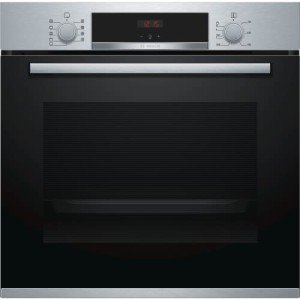The Rise of Built-In Ovens: A Seamless Approach to Modern Cooking
In modern kitchens, where style aesthetic appeals blend perfectly with performance, one home appliance stands apart as a real video game changer: the built-in oven. As property owners and chefs alike continue to look for innovative services that enhance their cooking experience, built-in ovens have actually become increasingly popular. This article explores the advantages, factors to consider, and trends surrounding built-in ovens, highlighting why they are a vital function in contemporary cooking spaces.
What is a Built-In Oven?
A built-in oven is a kitchen appliance developed to be integrated into the cabinetry of a kitchen instead of standing alone. Unlike conventional freestanding ovens, which can be moved and placed anywhere, built-in ovens can be found in various styles and sizes to fit specifically within designated spaces. Readily available in single or double setups, these ovens offer a structured appearance that matches contemporary kitchen area styles.
Benefits of Built-In Ovens
1. Space-Saving Design
Among the most enticing advantages of built-in ovens is their space-saving style. By incorporating the oven into cabinetry, you can maximize important counter and floor space. This is especially beneficial in smaller kitchens, where maximizing room is important. Built-in ovens can be set up at eye level, making them more available and reducing the requirement to bend down.
2. Visual Appeal
Built-in ovens add to a streamlined and cohesive kitchen design. Available in various finishes-- such as stainless-steel, black, white, and custom kitchen cabinetry-- they can mix effortlessly into the total decoration. This visual appeal enhances the kitchen's visual consistency and elevates the space, developing a modern and advanced environment.
3. Boosted Functionality
Numerous built-in ovens come geared up with innovative cooking innovations, such as convection cooking, steam ovens, and smart features. These improvements allow for flexible cooking alternatives, making it easier to attain professional-level results at home. Smart built-in ovens can even link to Wi-Fi, allowing users to control the oven remotely, receive alerts, and gain access to a variety of cooking programs and dishes.
4. Enhanced Ventilation
Since built-in ovens can be integrated with cooking area hoods and ventilation systems, they can assist preserve better air quality and reduce cooking smells. This is especially considerable for those who like to prepare with fragrant spices and active ingredients, as a reliable ventilation system can keep the kitchen comfortable and inviting.
5. Personalization Options
Built-in ovens use a large range of customization options to suit private cooking styles and needs. From professional-grade home appliances with several cooking modes to compact designs for smaller kitchens, house owners can choose the oven that fits their particular requirements. Lots of manufacturers likewise provide customizable front panels, enabling you to match the oven's appearance to your cabinetry for a genuinely combined appearance.
Factors to consider When Choosing a Built-In Oven
While built-in ovens have numerous advantages, there are important factors to consider to keep in mind before making a purchase:
1. Price
Built-in ovens generally feature a greater price tag than their freestanding counterparts due to their style and setup requirements. It's important to consider both the expense of the oven and any additional expenditures related to kitchen cabinetry adjustments or setup.
2. Installation Requirements
Setting up a built-in oven frequently requires expert help, especially if you need to customize existing kitchen cabinetry. Ensure that you consider any costs connected with installation, consisting of labor and prospective kitchen cabinetry changes.
3. Size and Dimensions
Before acquiring a built-in oven, measure the designated space precisely to make sure a correct fit. Built-in ovens can be found in various sizes and setups, so choosing one that lines up with your requirements and kitchen design is important.
4. electric integrated oven and Usage
Consider your cooking routines and needs when picking a built-in oven. If you regularly host large events, a double oven might be more helpful. On the other hand, if you have a compact cooking area, a single-wall oven might be adequate.
Trends in Built-In Ovens
The kitchen appliance market is continuously developing, and built-in ovens are not exempt from emerging trends. Some current trends consist of:
Smart Technology Integration: With the rise of smart home innovation, built-in ovens now typically include connection alternatives. This enables users to monitor cooking progress and change settings through mobile apps.
Energy Efficiency: As sustainability ends up being a top priority, numerous manufacturers are investing in energy-efficient built-in ovens that lower energy consumption while preserving performance.
Multi-functional Designs: Built-in ovens now use features such as air frying, sluggish cooking, and steaming, providing adaptability that meets a large range of cooking approaches.
Conclusion

Built-in ovens unquestionably represent a perfect blend of style, function, and benefit in today's cooking areas. As more house owners choose this contemporary option, the focus moves to creating a cooking area that is as visually pleasing as it is useful. Whether you are building a brand-new home or redesigning your cooking area, thinking about a built-in oven could raise your culinary experience and transform your cooking area into an elegant and functional haven. With a selection of options readily available and ongoing innovations in innovation, built-in ovens remain a standout choice for both amateur cooks and culinary enthusiasts alike.
